External Biosecurity
Prevent diseases from entering your farm
An important element of biosecurity is preventing factors that cause diseases from coming onto your farm. Maintaining a closed herd is the best way to minimize this risk. However, maintaining a closed herd may not always be possible. Thus, disease prevention is achieved by implementing stringent external biosecurity practices in your beef cattle operation. In this module, we will learn external biosecurity practices in-depth.
Limiting New Cattle Purchases
Each new animal brought onto your farm increases the chance that you could bring in new diseases. So, you should take these strategic steps when buying cattle:
- Only buy the number of animals you need.
- Make a purchase plan, discuss a health maintenance plan with your veterinarian, and stick to it.
- Minimize the number of herds you buy from. Buy cattle directly from a single herd whenever possible.
- Before purchasing cattle from vendors, ask them for the disease status of their herds.
- Buy cattle from herds of equal or higher health status than your herd.
- Obtain health certificates for all animals from the purchasing source.
- Isolate any purchased cattle from the rest of your herd for at least four weeks.
- After four weeks, check the health status of all purchased cattle.
Managing Cattle Loading and Unloading Areas
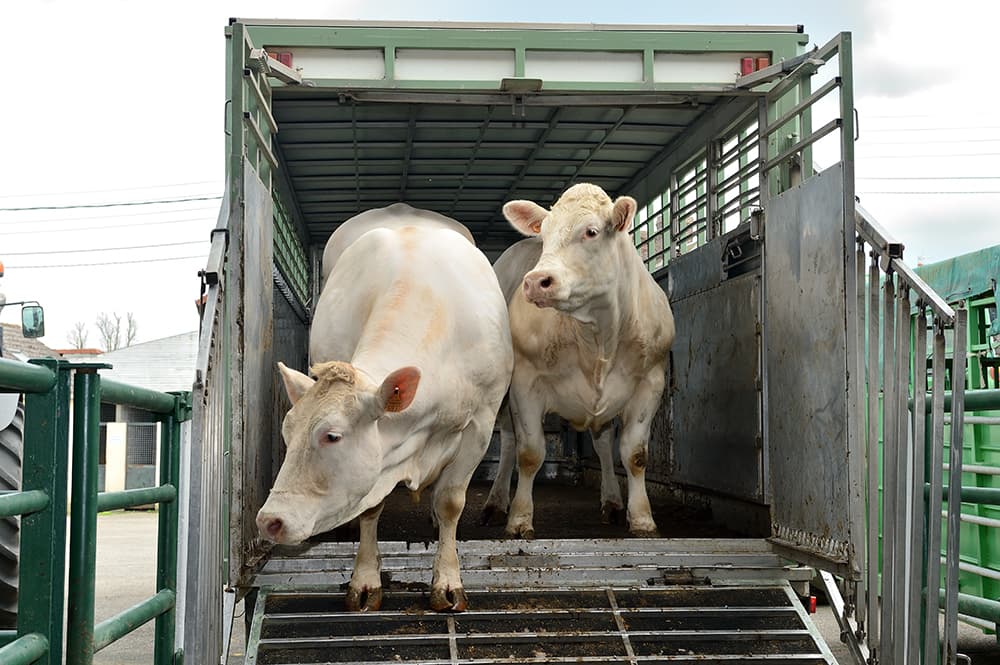
The movement of animals in and out of your farm also compromises the farm’s biosecurity by increasing the risk of cross-contamination. To minimize this risk, farmers should:
- Have a designated area for loading and unloading animals that is away from other livestock.
- Have a separate road to the loading and unloading area when possible.
- Make sure transport vehicles, especially borrowed ones, are cleaned and disinfected before use in the loading and unloading area.
- Make sure unloaded vehicles are sanitized and disinfected before they leave the farm.
- Make sure appropriate signs and contact details (e.g., phone numbers) are available to inform visitors of your biosecurity requirements and what you want them to do on arrival.
- Follow strict biosecurity protocols on your farm.
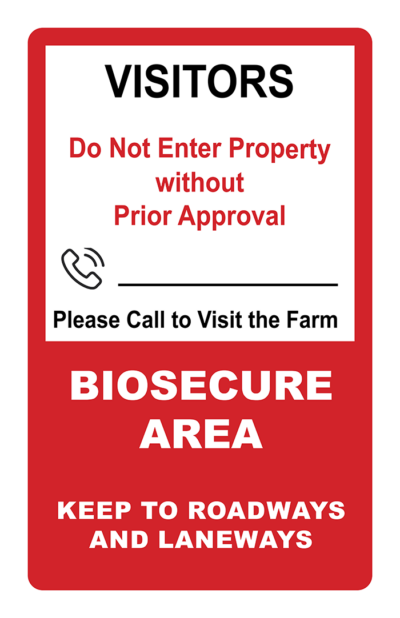
Transporting Cattle
Diseases can be spread to your herd through transporting newly purchased animals onto your farm or transporting your existing animals back and forth to cattle shows or markets. Vehicles that visit multiple livestock farms can also carry diseases, such as bovine viral diarrhea, that are of high risk to susceptible farm animals. The following steps will help minimize the risk:
Transport vehicles
- Make sure transport vehicles, especially borrowed ones, are clean and disinfected before use in all loading and unloading areas.
- Always load purchased cattle away from the other livestock on the vendor’s farm.
- Do not allow purchased animals to mix with other cattle (e.g., in a transport vehicle, at a market, or at a holding station).
- Transport purchased cattle directly between the vendor’s farm and your farm.
- Maintain logbook entries for all vehicles entering your farm.
- Unload all newly purchased or recently transported cattle directly into a quarantine area.
- Plan a route and time to avoid areas where cattle congregate, such as markets and slaughterhouses.
Other vehicles
- Control access to your farm by limiting entry points (one entry point is preferable) and locking restricted areas.
- Restrict unauthorized vehicle entry into farm facilities.
- Have visitors report to management and sign a visitor register or logbook on arrival.
- Designate parking spaces for vehicles.
- Designate an off-site location (with a separate entrance if possible) for garbage trucks, dead animal pickup vehicles, and feed and other delivery trucks.
- Clean and disinfect the wheels of farm vehicles both before and after use.
- Encourage the use of protective clothing and sanitizers when visitors come onto your farm.
- Provide facilities for visitors to clean boots and equipment on arrival and before departure, where possible.
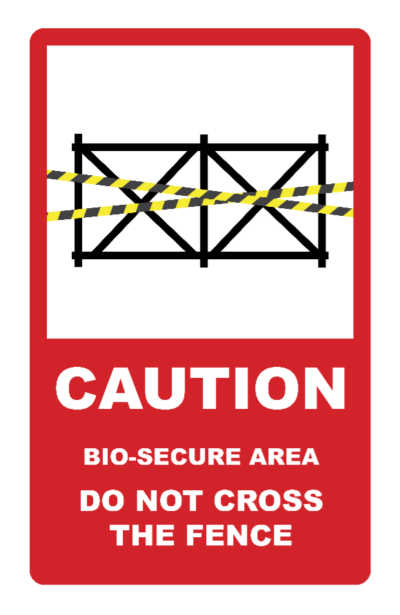
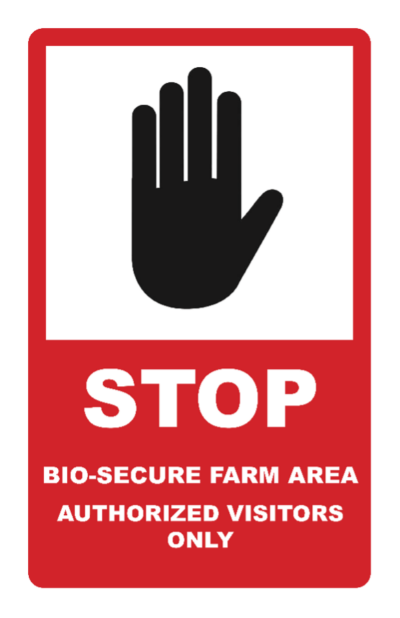
Display clear, highly visible signs near the first point of entry to limit unauthorized vehicles and people
Quarantining Cattle
The addition of borrowed or newly purchased animals to your farm and the shipping of existing herds back and forth to shows or markets pose the highest risk of disease transmission onto a farm. These animals may appear normal but can carry diseases (be silent carriers). Important biosecurity measures include:
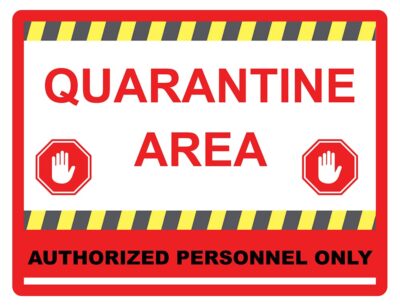
- Establishing a quarantine area at least 500 yards from the existing herd.
- Quarantining new animals and existing returned animals for at least 10 days (four weeks is optimal) to check their health status and ensure they are disease-free.
- Quarantining cattle that have been pastured on other farms.
- Providing quarantined animals with plenty of fresh, clean water and high-quality feed.
- Observing and testing quarantined cattle for diseases.
- Having a veterinarian physically examine quarantined cattle.
- Vaccinating or treating quarantined cattle as needed or recommended by veterinarians.
- Cleaning and disinfecting the quarantine area before new animals are brought into that area.
- Only handling cattle in the quarantine area after you have handled/checked other cattle on the farm, except for sick animals.
- Limiting the visitors and minimizing their contact with cattle in your quarantine area.
- Using clean protective clothes and boots to visit the quarantine area.
- Limiting movement of equipment and tools in and out of the quarantine area.
- Cleaning any equipment and tools, including boots, used in the quarantine area.
Controlling Farm Traffic
Employee and visitor traffic in and out of your farm can expose your herd to diseases. Employees and visitors should take these strategic steps to reduce the possible transmission of diseases:
Employees
- Record each time an employee enters and leaves the farm.
- Require employees to wear clean, farm-specific clothes and boots and to follow the farm’s biosecurity protocols.
Visitors
- Do not allow visitors who have traveled to countries with a history of foreign animal diseases such as foot-and-mouth disease and lumpy skin disease.
- Do not allow international visitors on your farm for at least five days after they arrive in the United States.
- Ask visitors about their recent visits to other farms and animal contacts.
- Require appointments to visit your farm and only authorize visitors who have a good reason to visit your farm.
- Log every visitor to your farm, noting:
- Name
- Date
- Vehicle details
- Contact information
- Reason for visit
- Foreign travel history in the last month
- Contact with farm animals in the last 48–72 hours
- Do not authorize visitors who have been in contact with outside livestock in the last 48–72 hours.
- Communicate with visitors about the biosecurity protocols you expect them to follow.
- Do not allow visitors to feed or pet animals.
- Provide clean boots and coveralls or disposable coveralls and boot covers to visitors before they enter your farm.
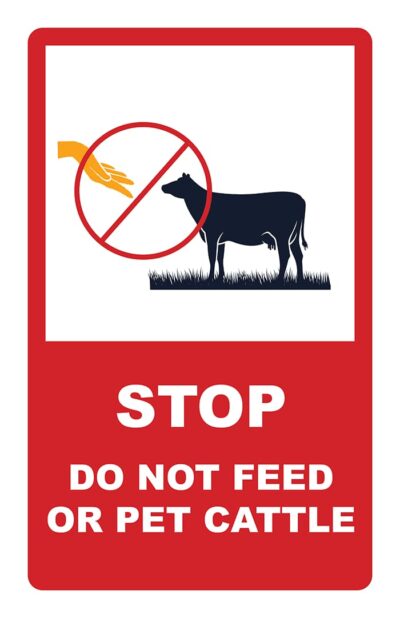
Using Prudent Breeding Practices
- Do not buy, rent, or borrow bulls from other farms without knowing their health and breeding history.
- When breeding through artificial insemination (AI) on your farm, you should:
- Only buy semen and embryos from reputable and certified suppliers with a disease-free status.
- Follow all biosecurity protocols when collecting, storing, transporting, and using semen for AI.
- Make sure your veterinary practitioner follows biosecurity protocols by using new syringes and needles on your farm or keeping your supply on your farm.
Controlling Pests and Wild Animals
- Keeping wildlife and other animals (dogs, cats, rodents, birds) off your farm is not feasible. Because these animals may transmit diseases to susceptible cattle via contaminated fur, foot pads, feet/claws, or feathers, every effort should be made to minimize the interaction of these animals with cattle. Protective measures include:
- Monitoring and managing wildlife to lessen their impact on your herds.
- Minimizing wildlife and feral and domestic animal access to feed on the farm and securely disposing of it.
- Having a control program for wild and other animals (e.g., rodents) that could spread disease.
- Building fencing around dry lots, pastures, and buildings housing cattle that are high enough to keep out deer and sturdy enough to hold up against feral pigs and other wild animals.
- Regularly inspect your farm to assess other potential biosecurity breaches and make necessary changes to avoid them.
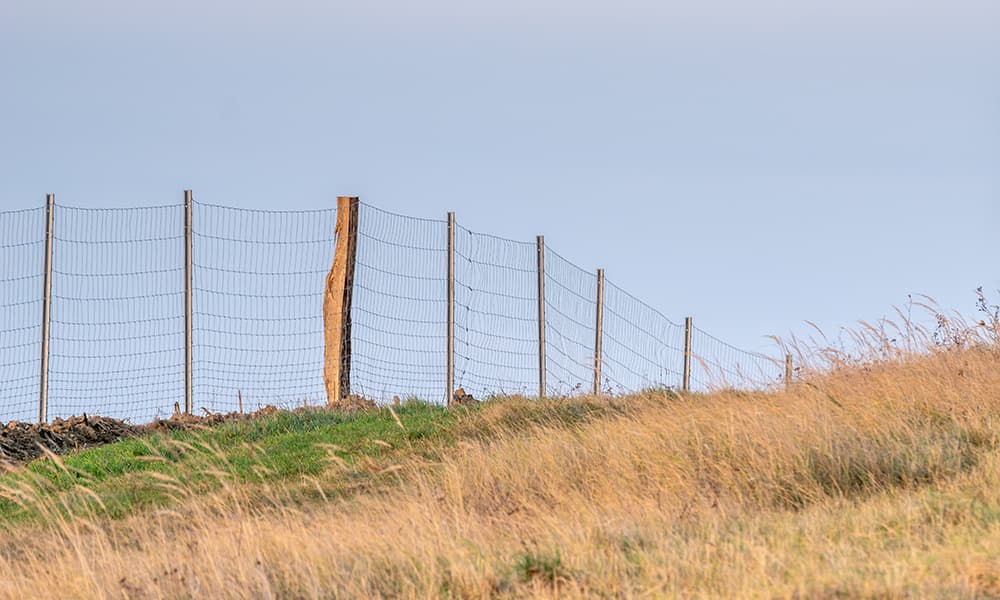
Managing Feed and Manure
Cattle raised on a farm may need feed to supplement pasture feeding or to prepare them for slaughter. The purchased feed can be a potential source of diseases and chemical contaminants. While using manure can provide nutrients to your farm’s soil and pastures, it’s important to carefully manage manure use to reduce the spread of diseases to your cattle. Protective measures include:
Feed
- Always buy feed from sources that use quality-control measures that minimize the risk of fecal, organic, or chemical contamination.
- Always make sure that purchased feeds do not contain protein derived from ruminant tissues.
- Require feed delivery trucks to use separate road access to your designated loading and unloading area that is away from other livestock, when possible.
- Make sure feed delivery truck tires are cleaned and disinfected before entering the farm.
- Make sure truck drivers wear disposable boot covers or provide them with some.
- Keep a logbook for delivery trucks entering the farm.
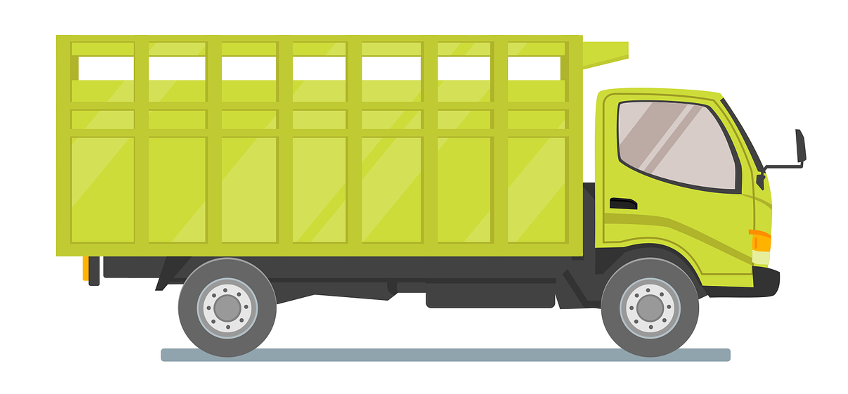
Ensure incoming trucks tires are cleaned before entering the farm.
Manure
- Make sure to protect against manure entry onto the farm from vehicles and equipment.
- Only spread slurry with your machinery, when possible.
- Only use manure from poultry, cattle, or other livestock or manure products that are certified as pathogen-free.
- Do not spread sludge from sewage treatment plants unless it has been certified as pathogen-free.
- Talk to your veterinarian about best practices for using animal waste such as manure and slurry.
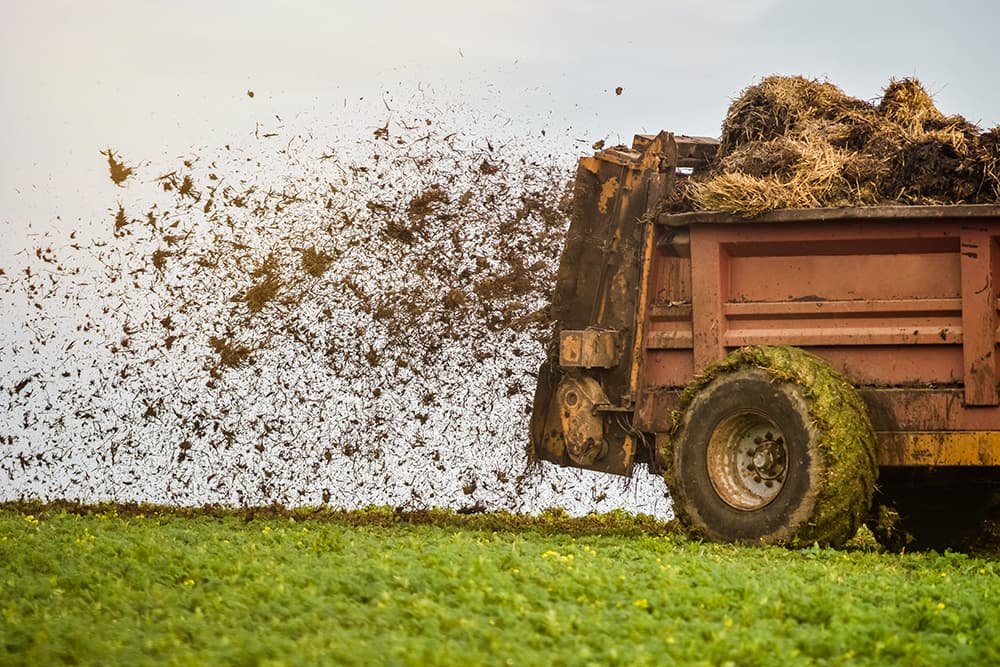
What’s Next?
Not all external biosecurity practices described in this module might be useful or applicable in your farm settings but now you understand the practices involved in preventing the disease from entering a cattle farm. Consult a veterinarian or a biosecurity officer to identify which practices apply to your farm’s needs.
